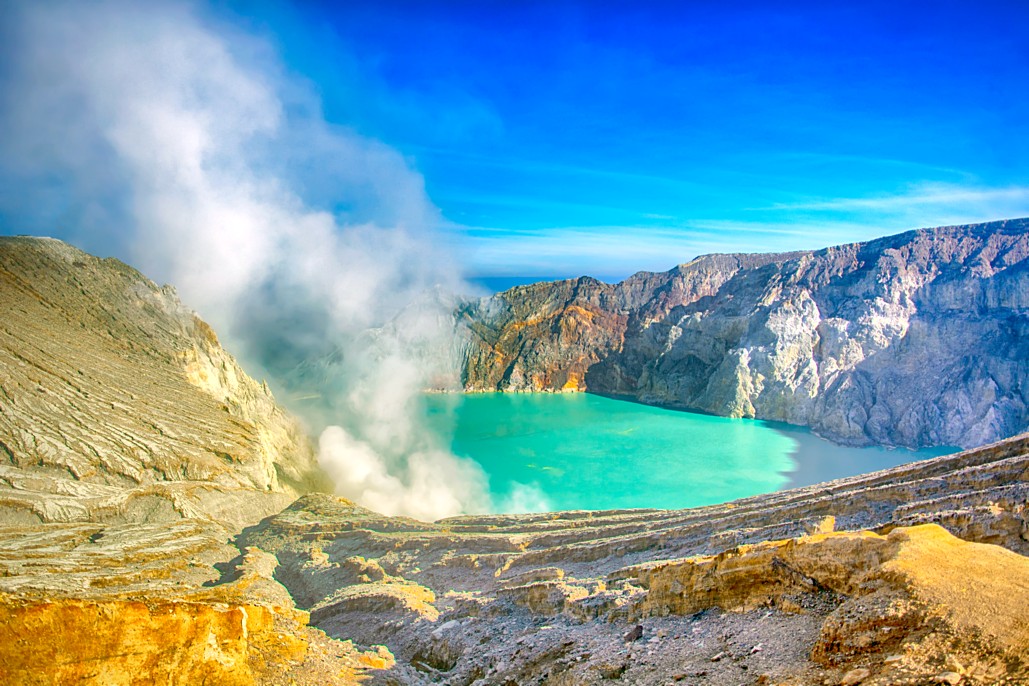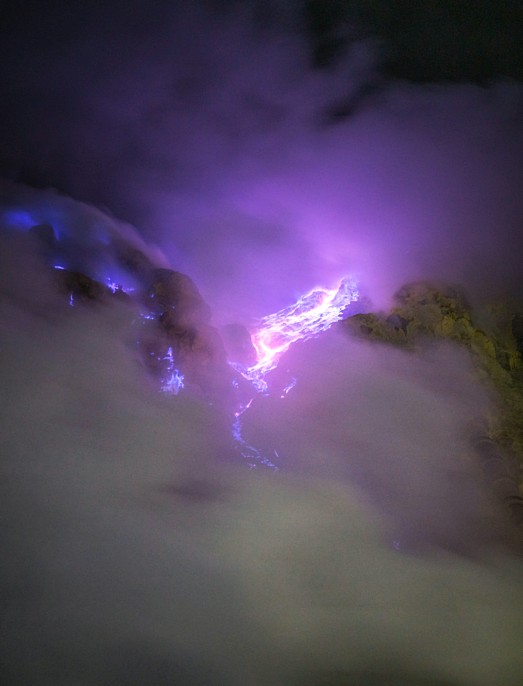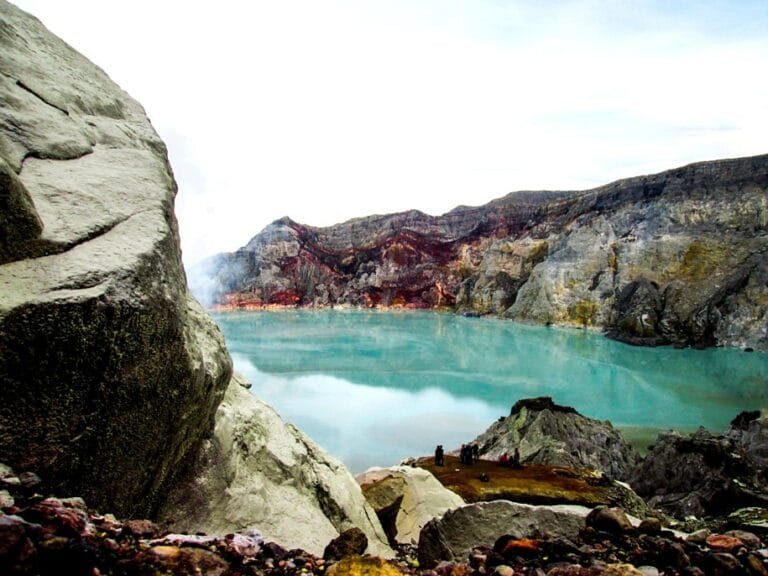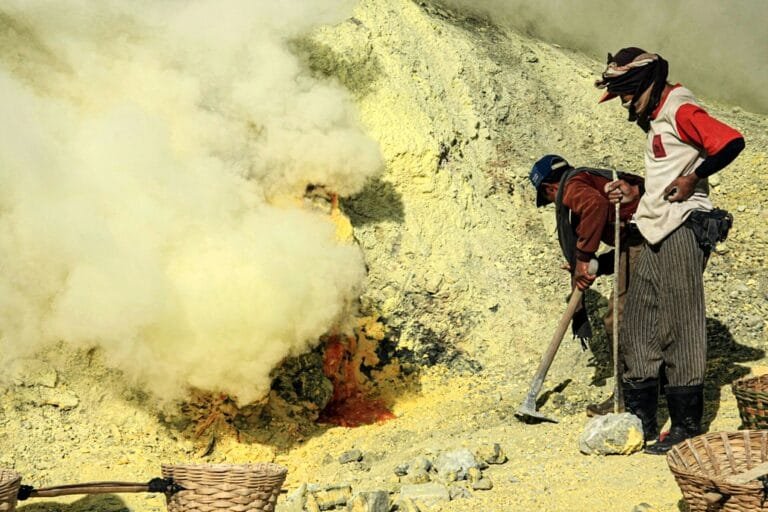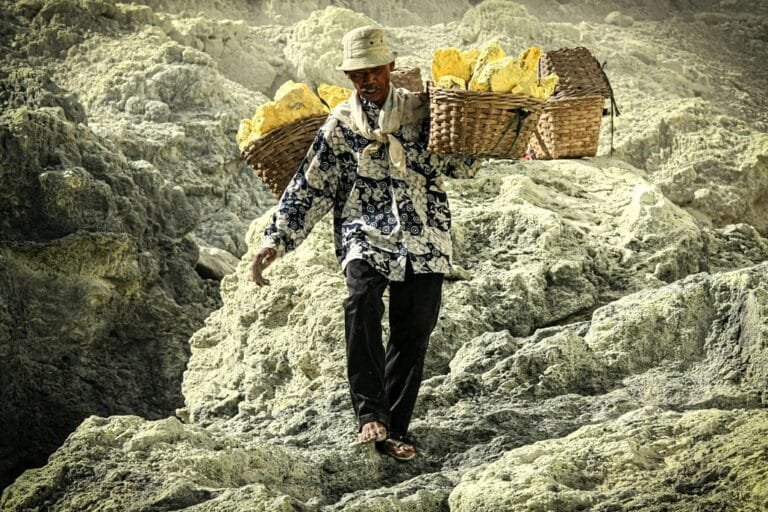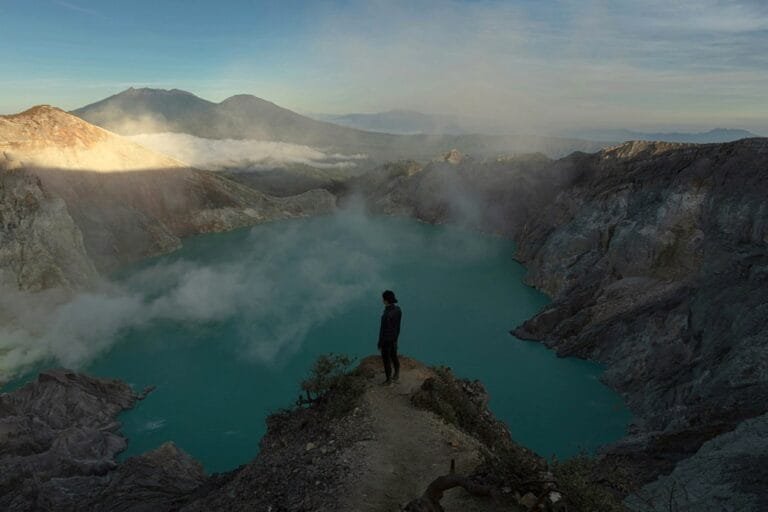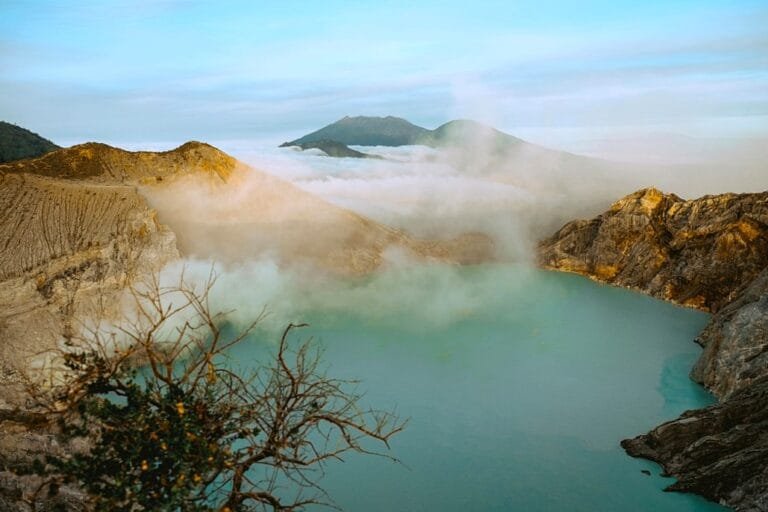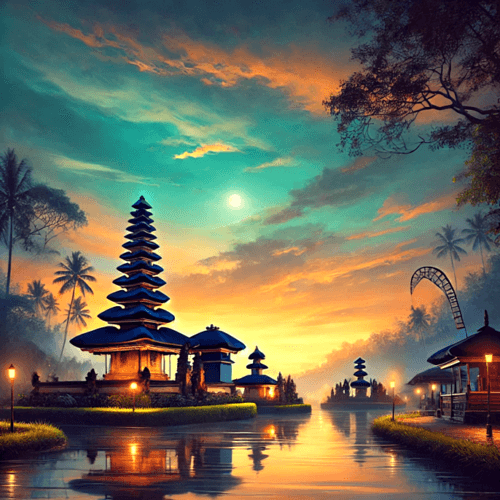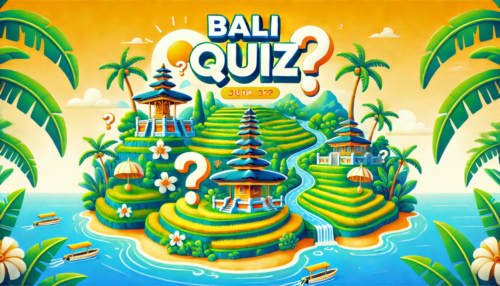A Guide to Java’s Stunning Natural Wonder
Mount Ijen, located on the island of Java, Indonesia, is one of the country’s most fascinating natural attractions. Known for its acidic crater lake and unique blue fire phenomenon, Ijen attracts adventurers, nature lovers, and photographers from around the world. The volcano is part of the Ijen-Merapi complex, an active volcanic region with stunning landscapes and dramatic views, making it a must-visit destination in Indonesia.
The Trek to Ijen
Trekking to the summit of Ijen is an adventure in itself. The hike begins at Paltuding Base Camp, which is located at an altitude of about 1,850 meters. The trek is around 3 kilometers long and can take 1.5 to 2 hours, depending on your fitness level.
- Difficulty: The hike is considered moderately challenging, with steep inclines, especially as you approach the crater.
- What to Bring: It is recommended to bring a headlamp or flashlight for night trekking, gas masks to protect from sulfur fumes, warm clothing for the cooler temperatures, and plenty of water.
The Blue Fire Phenomenon
One of the most unique and mesmerizing aspects of Ijen Volcano is the blue fire—a rare natural phenomenon caused by the combustion of sulfuric gases that emerge from cracks in the volcano at high temperatures. When these gases come into contact with oxygen in the air, they ignite, producing bright blue flames that are most visible in the darkness before dawn.
Tip: Best Time to See the Blue Fire: The best time to witness this phenomenon is during the early morning hours, usually between midnight and 3 AM. To catch it, visitors typically begin their trek around midnight.
The Acidic Crater Lake
At the top of Mount Ijen lies the world’s largest acidic volcanic crater lake, known as Kawah Ijen. The vibrant turquoise color of the lake is breathtaking, but it’s also highly acidic due to the presence of dissolved sulfuric compounds. The water is so acidic that its pH level is close to 0, making it one of the most corrosive lakes on Earth.
- Crater Size: The lake is around 200 meters deep and spans about 1 kilometer across, creating an awe-inspiring sight for visitors.
- Warning: Visitors should be cautious of the sulfuric fumes that are occasionally released into the air, especially when the wind direction shifts. Gas masks are often required for safety.
Sulfur Miners of Ijen
A unique and challenging part of Ijen’s story is the presence of sulfur miners who extract blocks of yellow sulfur from the crater. The miners carry heavy loads, sometimes up to 90 kilograms (200 pounds), on their shoulders as they climb up and down the crater’s steep paths.
This grueling work is done in harsh conditions, with the miners facing toxic gases and extreme terrain. Many visitors are struck by the miners’ strength and perseverance, often engaging with them to learn more about their difficult work.
Best Time to Visit
The best time to visit Mount Ijen is during the dry season between April and October, when the weather is more stable. Visiting during the rainy season can make the trek more difficult and obscure views of the blue fire and crater lake.
How to Get There
Mount Ijen is located in East Java. The most common way to access the area is by traveling from Banyuwangi or Bondowoso. Banyuwangi is the closer of the two cities and has better infrastructure for tourists. The journey from Banyuwangi to Paltuding (the starting point of the hike) takes about 1.5 to 2 hours by car.
Many visitors also combine their trip to Ijen with a visit to Bromo-Tengger-Semeru National Park, home to another famous volcano, Mount Bromo. This makes for a fantastic volcano-trekking tour across East Java.
Sustainability and Environmental Concerns
Due to its growing popularity, there are concerns about the environmental impact of tourism on the Ijen area, especially the crater lake and surrounding ecosystems. Visitors are encouraged to follow responsible travel practices:
- Do not litter.
- Respect the sulfur miners and their work.
- Avoid disturbing the natural environment, including the unique flora and fauna around the crater.
Conclusion
Mount Ijen offers a unique experience that combines the beauty of Indonesia’s volcanic landscape with a deeper understanding of the region’s natural and human history. From the stunning blue fire to the acidic crater lake, and the hard-working sulfur miners, a visit to Ijen is truly an unforgettable adventure. With proper preparation and a sense of respect for the environment and local communities, a trek to Ijen Volcano is a highlight of any trip to Java.
Whether you’re a nature enthusiast, photographer, or adventurer, Ijen provides a rare glimpse into the extraordinary forces of nature at work beneath the Earth’s surface.




